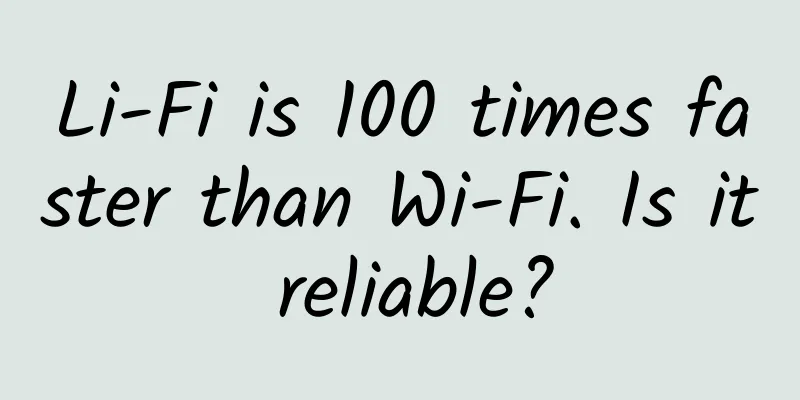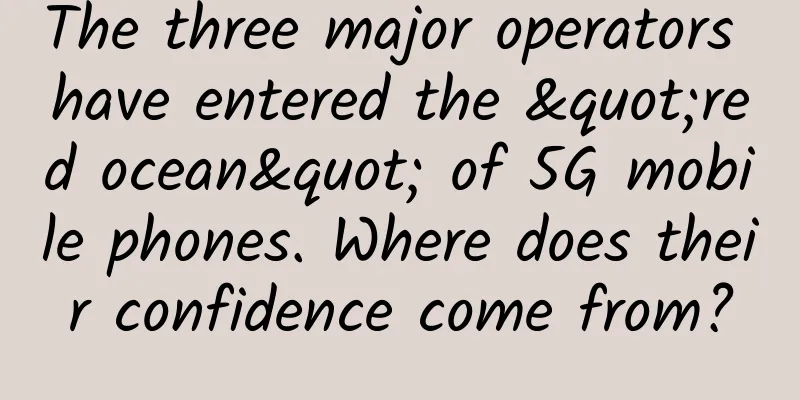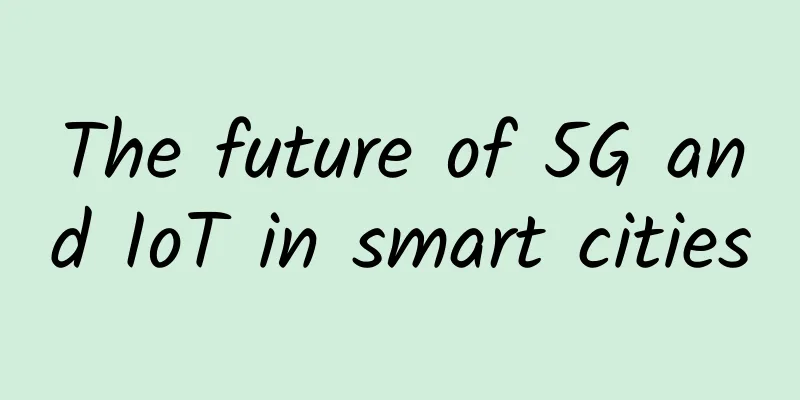Li-Fi is 100 times faster than Wi-Fi. Is it reliable?

|
Wi-Fi has had a huge impact on mobile computing, allowing employees to access corporate networks from anywhere and coffee shops to become workspaces for independent workers. But Wi-Fi has its shortcomings, so a new standard has been born: Li-Fi, which, if it makes it to market, could fill the gaps left by Wi-Fi technology. The problem with Wi-Fi is that its signal coverage is limited, especially against walls, and it is easy to be hijacked by hackers. Although bandwidth has increased in recent years, when too many people access Wi-Fi at the same time, the speed can easily slow down. Adding more Wi-Fi is at best a partial solution. It doesn't solve the security problem and only partially solves the scalability problem. Li-Fi, or visible light wireless communication, is an emerging wireless protocol that uses the visible light spectrum to provide wireless network access. Li-Fi transmitters use LED lights to modulate light intensity, mostly beyond the range our eyes can perceive, and are read as data by photosensitive receivers. Because LEDs already use chips to control their output, they can be modulated up to millions of times per second, theoretically transmitting data 100 times faster than Wi-Fi. But Li-Fi is not meant to replace Wi-Fi, but to complement it. Whether we use smartphones, tablets or laptops, both will exist at the same time, which requires a special receiver and transmitter to send and receive Li-Fi signals. A special encoder/decoder chip is also needed to convert the light signal into data. Li-Fi is still a work in progress, but its inventors say the IEEE is considering it for inclusion in the 802.11 Wi-Fi standard. "The introduction of light-emitting diodes (LEDs) for general lighting has created a growing interest in using the visible spectrum for wireless communications." But the standards body is still seeking feedback from its members. "Getting standards approval is tough," said Will Stofega, program manager for mobile device technologies and trends at IDC. "There are always ecosystem and political interests, and I always feel that a lot of work is needed, but Li-Wi is the most promising of the alternative connectivity technologies." Stofega warned that vested interests will be fearful and suspicious of any technology that poses a potential threat to their revenues. Just as some 4G vendors opposed 5G because it threatened their market dominance, Li-Fi is likely to face opposition. “There will definitely be people in the Wi-Fi forum saying that Li-Fi is a bad idea,” he said.
Wireless spectrum resources are tight Using light to transmit data is nothing new; that's how TV remote controls work. But remote controls use infrared light, which has strict limits on how far it can go and how much it can transmit. Li-Fi was first proposed in 2011 by Professor Harald Haas, Chair of Mobile Communications at the University of Edinburgh and co-founder/chief scientific officer of pureLi-Fi, the company trying to bring Li-Fi to market. Haas said that the shortage of wireless spectrum resources inspired him to create Li-Fi. Haas once worked on 4G at Siemens. He realized that the wireless spectrum was not enough for the multimedia era. After that, he developed the world's first Li-Fi wireless transmitter and cooperated with French lighting manufacturer Lucibel to create the first fully integrated Li-Fi lighting fixture, which was demonstrated at this year's Mobile World Congress. “Li-Fi today is like Wi-Fi 15 years ago, and in five to 10 years, Li-Fi will be as ubiquitous as Wi-Fi,” he said. Anand Oswal, senior vice president of engineering at Cisco's Enterprise Networking Group, said Cisco sees Li-Fi as an exciting emerging technology with great potential. Cisco's strategy is to build Li-Fi technology and eventually develop products, but he added: "We are still in the exploratory phase and Cisco has not made any decisions on products and solutions for Li-Fi." One potential area of integration for Cisco is its Digital Building initiative, a suite of solutions that partners with vendors like Philips, Microchip, Cree and Molex to power enterprise lighting systems using Cisco’s innovations in Power over Ethernet (PoE) and Universal Power over Ethernet (UPoE). “The ability to convert every bit of light in an enterprise into a medium for wireless communications is the future evolution of this solution,” said Oswal. Cisco is working with partners to explore how the technology can be seamlessly integrated into Cisco’s wireless infrastructure. “This will allow Li-Fi technology to build on decades of innovation in Wi-Fi.” Jerry Johnson, president and CEO of EMC, an energy controls and IoT solutions provider, said Li-Fi is of particular interest to retailers, who see it as a potential replacement for Bluetooth beacon technology. He also sees interest from governments, airports and owners of commercial spaces and buildings who want to supplement Wi-Fi or use Li-Fi in conference rooms. EMC plans to become a distributor of the Li-Fi bulbs nationwide and has already deployed them at 80 test sites. “I think there will be a combination of Li-Fi and Wi-Fi in the future, with Li-Fi taking the lead,” he said. “Li-Fi will greatly increase the overall bandwidth, speed and reliability of the network, not to mention improve communication capabilities.” Some companies are testing Li-Fi, but they are not disclosing information now. He added that EMC's own research shows that Li-Fi can transmit data 100 times faster than traditional Wi-Fi. How Li-Fi works The key difference between regular LED lights and Li-Fi-enabled bulbs is that the driver circuitry in Li-Fi bulbs sends and receives wireless signals, encoding data using varying intensities of light. Some lights can connect to the network by connecting a CAT5 cable, while others can receive data over a power line connection. Li-Fi creates a two-way link using special photodetectors at both ends: one end is in the LED light in the room, and the other end is in the mobile device or a wireless transmitter that plugs into the mobile device. The wireless transmitter sends data back to the LED. As you move through a room with multiple Li-Fi lights, the device automatically detects where the strongest signal is coming from and transfers to that light source, so the signal always stays connected and optimal. Haas estimates that smartphones and other devices will begin shipping with Li-Fi signal chips within two to three years. Stofega said he has not heard of any interest in Li-Fi from mobile vendors, most of which are focusing on 5G. “It’s not very hard to do and it’s not very expensive, but the mobile vendors will want to see Li-Fi proven before they deploy it,” he said. “I’m not even willing to go all in on 5G because they’re still working on the standards.” But Li-Fi differs from Wi-Fi in several key ways, such as range, interference resistance, and throughput. One of the limitations of the wireless spectrum is that as you go from 2.4GHz to 5GHz, you lose coverage. Above 5GHz, the range decreases further. In theory, Li-Fi has far more throughput than Wi-Fi. pureLi-Fi just released a product where a single small micro-LED can transmit at 8 Gbps. Right now the 2.4GHz and 5GHz bands are already saturated with existing devices like cordless phones, Bluetooth devices, and Wi-Fi, not to mention new technologies like augmented reality, virtual reality, driverless cars, and billions of IoT devices. Since visible light is completely different from other types of RF frequencies, there’s no chance of signal interference, and since visible light is 1,000 times brighter than the entire 300 GHz radio spectrum, Haas points out that LED lights don’t even need to be bright enough for humans to see. Finally, Johnson said it will be cheaper to add Li-Fi to existing devices. "The cost of the technology is coming down so fast, it's not a challenge to add Li-Fi to devices." Li-Fi will use existing device camera technology. The camera in a laptop or smartphone will do a good job, they just need a decoding chip that will have to be added to future devices. But if Li-Fi becomes part of the 802.11 specification, Wi-Fi chips will also be able to handle Li-Fi signaling.
Lighting Industry Hass stressed that Li-Fi is a complement to Wi-Fi and 4G/5G, not a replacement. “Li-Fi can be used in streetlights as access points for smart city applications,” he said. “Indicator lights in home appliances can connect these devices to the internet via ceiling lights, while wearable devices with integrated LEDs can monitor health parameters and send data to the internet.” One of Li-Fi's shortcomings can also be considered an advantage. Because it uses the visible spectrum, Li-Fi can't penetrate walls. In many cases, this is a problem, but for secure connections, it's an advantage. Li-Fi says that people interested in security, especially the military, would like to be able to set up a wireless network that can be locked in a room, as long as the walls don't have windows. Cisco is still in the exploratory phase of Li-Fi and has not made any decisions about the technology commercially. The company believes that Li-Fi deployments will start in niche markets related to security and safety. “In my opinion, Li-Fi will achieve critical mass when the ecosystem of endpoints for visible light communications becomes more mature,” he said. “Cisco can see a future where it can sell Li-Fi sources to enterprises that provide specific throughput and integrate seamlessly into the Cisco wireless architecture.”
Serious challenges facing Li-Fi Like any new technology, Li-Fi faces challenges. At least Wi-Fi has the full backing of Intel. Li-Fi is driven by a university professor in Scotland, even if he has allies like Cisco and British Telecom. Haas said they are working with pureLI-FI, but would not elaborate on the depth of the collaboration. "Any new technology has several barriers that prevent it from being widely adopted," Oswal said. "But these are often just a matter of keeping pace with technological progress and marketization." Stofega believes that if IEEE includes Li-Fi as part of the 802.11 specification, it will play a decisive role, because Qualcomm, Intel and other manufacturers will support 802.11 chips. Then it will only be a matter of LED bulb deployment. To succeed, Oswal said it must deliver on its promises of throughput and scale; endpoint devices must hit the market; and there needs to be an ecosystem of vendors supporting Li-Fi to build lights. Jack Gold, president of mobile consulting firm J.Gold Associates, is skeptical. "Visible light communications have been tried for several years. It's not new," he said. "You can get a lot of bandwidth, but it's not as easy as it sounds." And Wi-Fi works well and is pretty much everywhere. If the technology you use is reasonably reliable, you can come up with a new technology to replace or supplement it, but it has to be better, and there are a lot of problems with Li-Fi that need to be solved. |
Recommend
I've been waiting for 10 years for the technology that allows me to surf the Internet on airplanes. Where does it come from?
In the past, when we were on an airplane, the fli...
What impact does the Log4j vulnerability have on operational technology (OT) networks?
Andrew Ginter, vice president of industry securit...
The IPv6 era is coming, and every grain of sand in the world can have an IP
When it comes to IPv6, I think most people think ...
The future of optical communications: innovation and integration of PON technology
Author | Heye Review | Chonglou With the continuo...
VMISS 30% off for all items, Los Angeles CN2 GIA/AS9929/Hong Kong CN2/Korea CN2/Japan VPS monthly payment starts from 3.5 Canadian dollars
VMISS is offering 30% off on all VPS hosts this m...
What the future of wide area network (WAN) management looks like
The recent surge in the number of employees worki...
[Black Friday] Zgovps: $12.9/year-1GB/20GB/2TB/Japan IIJ/Germany/Los Angeles AS4837, etc.
Zgovps also released a promotion during this year...
Is the United States blocking Huawei, or the entire future of 5G?
[[349279]] The United States is creating obstacle...
V.PS: €4.17/month KVM-1GB/20GB/1TB/Hong Kong Data Center
V.PS is a site under xTOM, providing VPS hosts ba...
Connecting the industrial ecosystem, 5G accelerates the empowerment of thousands of industries
As the saying goes, a single tree cannot make a f...
Customize SD-WAN to meet your needs
Why do we always think we can adopt a revolutiona...
Bacloud: 15% off KVM VPS, 25% off dedicated servers, 10TB hard drive server starting at $28.96/month
Bacloud is a Lithuanian hosting company founded i...
From the network I/O model to Netty, let’s first take a deeper look at I/O multiplexing
In the previous article, we learned about the fiv...
Are blockchain and IoT a match made in heaven?
The Internet of Things (IoT) market is on an upwa...









